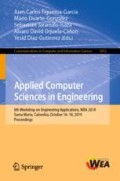Abstract
The embedded systems continue to display as solutions of smart surveillance systems. Background subtraction using Gaussian Mixture Model (GMM) is often portrayed as a common step for video processing. This work discusses the implementation of an embedded vision system on system-on-a-chip (SoC) device that integrates both a processor and an FPGA (Field Programmable Gate Array) architecture. The conventional Register Transfer Level (RTL) design, typically used for FPGA programming is slow, and the use of floating-point arithmetic is complex. However, the use of High-Level Synthesis (HLS) tools allows describing algorithms using high-level programming languages. Three background subtraction algorithms with floating-point arithmetic were developed using a hardware-software co-design methodology. The paper presents the details of the implementation on a ZedBoard Zynq Evaluation and Development Kit, considering requirements as hardware resources and power consumption used. Also, performance comparisons among a PC-based, ARM, FPGA and SOC-FPGA implementations are presented. The results showed that frame rates needed for real-time video processing were reached.
Access this chapter
Tax calculation will be finalised at checkout
Purchases are for personal use only
References
Arivazhagan, S., Kiruthika, K.: FPGA implementation of GMM algorithm for background subtractions in video sequences. In: Raman, B., Kumar, S., Roy, P.P., Sen, D. (eds.) Proceedings of International Conference on Computer Vision and Image Processing. AISC, vol. 460, pp. 365–376. Springer, Singapore (2017). https://doi.org/10.1007/978-981-10-2107-7_33
Bulat, B., Kryjak, T., Gorgon, M.: Implementation of advanced foreground segmentation algorithms GMM, ViBE and PBAS in FPGA and GPU – a comparison. In: Chmielewski, L.J., Kozera, R., Shin, B.-S., Wojciechowski, K. (eds.) ICCVG 2014. LNCS, vol. 8671, pp. 124–131. Springer, Cham (2014). https://doi.org/10.1007/978-3-319-11331-9_16
Cocorullo, G., Corsonello, P., Frustaci, F., Guachi, L., Perri, S.: Multimodal background subtraction for high-performance embedded systems. J. Real-Time Image Proc. (2016). https://doi.org/10.1007/s11554-016-0651-6
Ferryman, J., Shahrokni, A.: Pets 2009: dataset and challenge. In: 2009 Twelfth IEEE International Workshop on Performance Evaluation of Tracking and Surveillance, pp. 1–6, December 2009. https://doi.org/10.1109/PETS-WINTER.2009.5399556
Genovese, M., Napoli, E.: FPGA-based architecture for real timesegmentation and denoising of HD video. J. Real-Time Image Proc. 8(4), 389–401 (2013). https://doi.org/10.1007/s11554-011-0238-1
Genovese, M., Napoli, E.: ASIC and FPGA implementation of the Gaussian mixture model algorithm for real-time segmentation of high definition video. IEEE Trans. Very Large Scale Integr. VLSI Syst. 22(3), 537–547 (2014). https://doi.org/10.1109/TVLSI.2013.2249295
Goyal, K., Singhai, J.: Review of background subtraction methods using gaussian mixture model for video surveillance systems. Artif. Intell. Rev. 50, 241–259 (2017). https://doi.org/10.1007/s10462-017-9542-x
Kryjak, T., Gorgon, M.: Real-time implementation of background modelling algorithms in FPGA devices. In: Murino, V., Puppo, E., Sona, D., Cristani, M., Sansone, C. (eds.) ICIAP 2015. LNCS, vol. 9281, pp. 519–526. Springer, Cham (2015). https://doi.org/10.1007/978-3-319-23222-5_63
Rodriguez-Gomez, R., Fernandez-Sanchez, E.J., Diaz, J., Ros, E.: Codebook hardware implementation on FPGA for background subtraction. J. Real-Time Image Proc. 10(1), 43–57 (2015). https://doi.org/10.1007/s11554-012-0249-6
Safaei, A., Wu, Q.M.J., Yang, Y.: System-on-a-chip (SoC)-based hardware acceleration for foreground and background identification. J. Frankl. Inst. 355(4), 1888–1912 (2018). https://doi.org/10.1016/j.jfranklin.2017.07.037. Special Issue on Recent advances in machine learning for signal analysis and processing
Stauffer, C., Grimson, W.E.L.: Adaptive background mixture models for real-time tracking. In: 1999 Proceedings of the IEEE Computer Society Conference on Computer Vision and Pattern Recognition (Cat. No. PR00149), vol. 2, p. 252 (1999). https://doi.org/10.1109/CVPR.1999.784637
Toyama, K., Krumm, J., Brumitt, B., Meyers, B.: Wallflower: principles and practice of background maintenance. In: Proceedings of the Seventh IEEE International Conference on Computer Vision, vol. 1, pp. 255–261 (1999). https://doi.org/10.1109/ICCV.1999.791228
Vacavant, A., Chateau, T., Wilhelm, A., Lequièvre, L.: A benchmark dataset for outdoor foreground/background extraction. In: Park, J.-I., Kim, J. (eds.) ACCV 2012. LNCS, vol. 7728, pp. 291–300. Springer, Heidelberg (2013). https://doi.org/10.1007/978-3-642-37410-4_25
Zivkovic, Z., van der Heijden, F.: Efficient adaptive density estimation per image pixel for the task of background subtraction. Pattern Recogn. Lett. 27(7), 773–780 (2006). https://doi.org/10.1016/j.patrec.2005.11.005
Acknowledgements
This study was supported by the AE&CC research Group COL0053581, at the Sistemas de Control y Robótica Laboratory, attached to the Instituto Tecnológico Metropolitano. This work is part of the project “Improvement of visual perception in humanoid robots for objects recognition in natural environments using Deep Learning” with ID P17224, co-funded by the Instituto Tecnológico Metropolitano and Universidad de Antioquia. L. J. Morantes-Guzmán is under grants of “Convocatoria de Doctorados Nacionales 617 - COLCIENCIAS 2013”.
Author information
Authors and Affiliations
Corresponding author
Editor information
Editors and Affiliations
Rights and permissions
Copyright information
© 2019 Springer Nature Switzerland AG
About this paper
Cite this paper
Morantes-Guzmán, L.J., Alzate, C., Castano-Londono, L., Marquez-Viloria, D., Vargas-Bonilla, J.F. (2019). Performance Evaluation of SoC-FPGA Based Floating-Point Implementation of GMM for Real-Time Background Subtraction. In: Figueroa-García, J., Duarte-González, M., Jaramillo-Isaza, S., Orjuela-Cañon, A., Díaz-Gutierrez, Y. (eds) Applied Computer Sciences in Engineering. WEA 2019. Communications in Computer and Information Science, vol 1052. Springer, Cham. https://doi.org/10.1007/978-3-030-31019-6_11
Download citation
DOI: https://doi.org/10.1007/978-3-030-31019-6_11
Published:
Publisher Name: Springer, Cham
Print ISBN: 978-3-030-31018-9
Online ISBN: 978-3-030-31019-6
eBook Packages: Computer ScienceComputer Science (R0)

